THE BEHIND THE SCENES OF SOUND PRODUCTION; (LET's discuss PUBLIC ADDRESS SYSTEMS)
So France won the world-cup right? Proved themselves as the best National football team in the world, however as a STEM-oriented fellow, I am not just interested in the football match but also the stadium in which these matches are played.
I have had the privilege of speaking to thousands of students during a presentation before, and I must tell you while trying to cope with stage fright I actually found it hard hearing myself due to the poor sound system. You might then reason, what does this have to do with the stadium?...
It’s the PUBLIC ADDRESS SYSTEM that caught my attention this time.
If you happen to watch a football match live (on the pitch), you might not hear any commentaries which you hear from your TV screens, however, that doesn’t negate the fact that there is a system via which certain announcement is being passed to the spectators in that Stadium (Example, during substitution). Not just a football match PAS has a diverse means of applications like Churches, Parties, Military base, etc.
PAS an overview
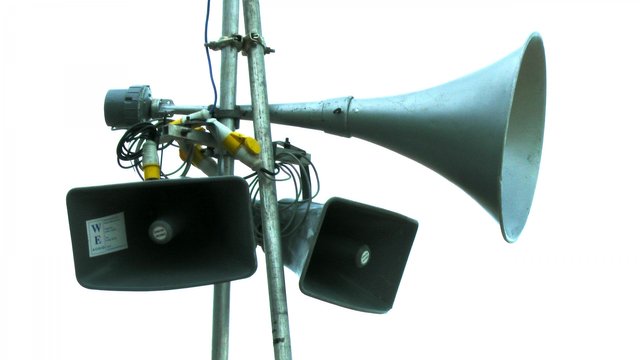
PAS overview public domain picture
Public address system simply refers to a coming together of different electronic instruments for the purpose of passing clear information to a wide range of audience, of course like many other systems we have today has also had its fair share of historical development. For example, I had always known the common microphone since childhood.
Far back as the 6th century in Greece an early model of the megaphone had been in existence, this megaphone had a narrow and conical mouthpiece of which sound was amplified and channeled therein, this continued till the 17th century where Kircher developed what we now know as the modern megaphone, we might not have called this a megaphone then as the term megaphone came after Thomas Edison’s development of the Kircher’s model.
With this megaphone, the faintest voice could be clearly heard as far as possible but its only problem was I the that this megaphone was too large and was mainly static while being used because it couldn’t be carried from one place to another.
In 1960 after series of research and improvement the electric megaphones was then developed which used electric power to amplify the voice.
ARE MEGAPHONES THE ONLY PAS?
You see the goal of every public address system is to give amplify the faintest of voice to the largest of audience, however, there are situations whereby our desire is not only project voice through a large distance.
But also to give it a type of effect and feeling especially during live performances at this point, a megaphone might not suffice, (though they are the simplest and earliest forms of PAS) but the PAS used for such reasons are called “sound re-enforcement PAS”. The term sound re-enforcement simply refers to “live event support” but the PA systems might be limited to sound projection to a large audience.
Sound re-enforcement public address system might should comprise;
Microphone (Input transducer)
Mixers and Equalizers (Signal processors)
Amplifiers (Where the magic happens, and sound is projected)
The loud speaker (Output transducer that drives sound far)
Thanks to electric power, all this is made possible. During live events, e.g. a Rock concert, there is not only the desire to speak to large audience but also to give a sense of style and effect. As we would see, the behind the scenes of this is a variation of the input electric signal.
Microphones, as the name implies, are structurally small in nature and is a part of the PAS, technically, it is referred to as an input transducer, transducer are devices that converts that converts another signal into electrical signal or vice versa, there are different types of transducer of which a microphone is part in that it converts sound energy into electrical energy, it therefore operates as a converse of the loud-speaker.
HOW THEN DOES A MICROPHONE DO THIS (inside the microphone)
Inside the microphone, we have a diaphragm, (you know the diaphragm is also in the human system), it is made of a thin plastic and is designed to move back and forth when the sound energy waves hits it.
Attached to the diaphragm is a coil which also moves back and forth on the application of sound energy. Remember from the last post that the movement of coils through a permanent magnet (magnetic field) induces electric current. So we see even electromagnetic induction would find its application here too.
There is another type of microphone called The condenser microphone this microphone works in slightly a different way from the dynamic microphone operates. In the sense that instead of using coils and permanent magnets, in this case the diaphragm is used to move the metal plates of a capacitor, the movement of the metal plates of the capacitor would produce a current. Dynamic microphones are quite more rugged in construction and therefore finds its application is stage performance, but condenser microphones are used in studio recording.
You know i= C*dv/dt, this formula tells us that the current increases with increased capacitance and capacitance vary with the distance of separation of plates. This simply means as the plates change their distance, an electrical current pattern is generated. The condenser microphone offers superior quality due to the ability of its diaphragm to follow the sound waves closely. A good example of a condenser microphone is Neumann’s. Condenser microphones require an external PSU to power its internal circuitry.
HOW ABOUT WIRELESS MICROPHONES? This one doesn’t have a physical cable to transport the electric signals, it therefore transmits this signals in form of radio waves to its radio receiver counterpart, many at times the wireless microphone has a unique receiver because of the unique frequency of operation.
The receiver then converts the signal into one which the mixer can receive. The wireless microphone is powered by a battery; the battery which is used to power the radio transmitter.
The usage of unique frequency in wireless microphones would be best appreciated in events where multiple wireless microphones is used, to avoid interference of signals it is best to transmit at a lower frequency of operation. Using wireless microphones in live events ensures;
Freedom of movement of speaker/artiste.
A neater stage due to reduction of cables
Wireless microphone may at times limit the number of operating microphones at a time due to frequency interference.
THE MIXER STAGE
Every incoming electric signal from the microphone, enters here, what happens here?
If someone with a baritone voice is speaking through the microphone, there is a possibility that the frequency of his voice is low and his words may not be clear enough during output.
Also if it’s a feminine voice speaking to the microphone, her pitch might be so high that some of what she says is not heard clearly.
The nature of the halls (medium of propagation) is also affects the sound experience, certain phenomenon such as reverberation must be taken into consideration. This phase is considered to be the most important when it comes to Sound reinforcement systems.
Musicians and live performance spend lots of time and resources to ensure top-notch sound quality and experience.
When different sounds from different input transducers is received, it is separated from each other before amplification. Because of this isolation, it gives room control of individual channels, and we can actually determine the way each microphone connected to the system would be in terms of volume, pitch and tone.
You can easily increase or reduce the bass of the Microphone the baritone voice uses or treble volume of the one which the high pitch lady uses as the case may be.
Mixers are classified as the number of channels it has, of course, the more the channels the more the cost and the wider the applications. An example is the 4 channel mixer having 4 input port or as much as 18 channels having 18 input ports as shown above. The sound engineers would definitely want to get a feedback of what the output is, he can connect a monitoring device (usually special headphones) to get a firsthand review of how the sound is.
The mixer is not only used to isolate channels for control, but also blend each channel to produce a cool output. I tell my first the major thing that separate one performance from another is the quality of the sound and the quality f sound is determined mainly by the quality of the mixer. Well not only the mixer, let’s ride…
THE AMPLIFIER (Raising the signal level)
Remember we are on a journey, where we talked about how that the sound signals are converted into electrical energy through the diaphragm in the case of the speakers and the microphones too. We need to understand that having controlled this sound via certain actions. For public address, it is the aim for the level of the sound to be raised, but this can only happen when the level of the controlled electrical signal received from the mixer is raised.
**Amplification is simply defined as the process of boosting signals (particularly electrical or electronic signals) **
It is also possible to achieve mechanical amplification, in order to amplify my voice without using a Microphone by cupping my hands around my mouth and speaking. The action can be likened to increasing pressure of water (Increasing the force whilst reducing the area) and this happens in the same way when it comes to sound waves.
Amplifier is an electric device that carries out the process of amplification, there are various ways of carrying amplification out, one method is either to use a transformer, or you use a transistor. For sound amplification, you use a power transistor.
Transistor is a three junctional electronic device which comprises the base, the emitter and the collector. We would not be dwelling much on that today however the amplification action occurs by feeding a small current (from the mixer) into the base, you would get a much higher current between the emitter and collector. The amplifying power of this device is given by the gain. The gain is the ratio of the output to the input of the transistor.
During amplification, current boost isn’t the only thing to worry about. We should also worry about the quality of the amplified output. Distortion tends to occur in the transistor based amplifier, therefore there is a maximum gain the amplifier can have.
To overcome this problem you connect one or more of the transistor to each other. Therefore the output of one becomes the input of the other and there the chain goes on. This type of working is known as the multistage amplifiers.
At this point it is time to note that like the transformer that doesn’t alter energy or power levels, the amplifiers to doesn’t alter power levels. what then accounts for the extra output energy? Well the transistors themselves ae powered by extra electrical energy, this accounts for the difference in energy.
WHERE THE MASSES HEAR THE SOUND (THE LOUD-SPEAKER)
The working of the speaker is in the converse of the microphone, Let's see How
When you connect your amplifier to your speaker we have high power fluctuating current signals flowing into it. This speaker simply converts these currents to sounds, it is therefore referred to as an output transducer, sound basically is made up of vibrations. If you have ever handled a drum before (bass drum in particular) on hitting the drum, you will see a vibration on the surface of the drum, you can actually see these vibrations because of the low frequency of the drum, sound basically is vibration.
The vibration producer of the speaker is called the diaphragm, the diaphragm of the speaker, in this case, has a cone-like shape, the wider the cone, the bigger the speaker and of course the sound output, the wider end of the cone is connected directly to the speaker surface (outer metallic rim) while the thinner end of the cone is connected to an Iron coil. Just in front of that iron coil lies our permanent magnet.
SO WHATS THE PROCESS ? Fluctuating current from the amplifier (Current fluctuates as a result of varying loudness, frequency and input signal of the sound produced) enters into the speaker through the coil, this makes the coil temporarily magnetic or better still electromagnetic.
The polarity of electric flow would either cause the magnetic coil to attract or repel the permanent magnet, the force of attraction or repulsion would cause the speaker cone to move therewith. The speaker cone (diaphragm) produces vibrations (@ either low or large frequency) don’t forget, sound is vibration.
ON A FINAL NOTE, LETS TALK ABOUT HOW TO AVOID ACOUSTIC FEEDBACKS
I think we should call it a day for now, but before then, I would want us to consider just one more thing;
So you have set up that cool sound system mixed the sound, connected your musical instruments done proper sound checks before the event. And when the speaker was about to speak, there was a howling unpleasurable sound coming from the speaker. Quite embarrassing right (especially if that speaker was Bill Gates. Well that’s close to impossible).
This situation is most likely caused by what is called acoustic feedback,
Acoustic feedback occurs when sound output from the speaker goes back into the microphone and gets re-amplified to come out through the speakers again.
A sound loop is formed, note this: You spoke ones, you heard yourself the instant you spoke, this means under normal circumstances you will keep hearing yourself again and again instantly. But it is not so, during acoustic feedback event the loop creates its own frequency (usually high) that gives this unpleasurable howling sound.
HOW DO WE AVOID ?
While the sound engineer is considering where to place the speakers for maximal sound experience, he must also consider avoiding acoustic feedbacks, the best positioning is to mount the speakers in such a way that it points away from the microphone.
He might also want to consider using a unidirectional microphone, and make sure the users of the microphone stands close to it. Lastly, an equalizer will totally come into play here, he can use it to dampen the frequency of places prone to feedbacks.
Thanks for reading
REFERENCES
To study further kindly read;
If you write STEM (Science, Technology, Engineering, and Mathematics) related posts, consider joining #steemSTEM on steemit chat or discord here. If you are from Nigeria, you may want to include the #stemng tag in your post. You can visit this blog by @stemng for more details.
You can also join us at Promo-Mentors, to improve your blogging skills. Join our discord channel and meet awesome mentors who are willing and ready to shape your writing skills.



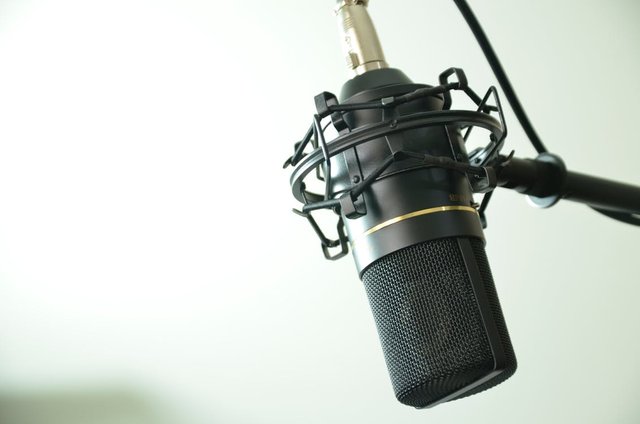
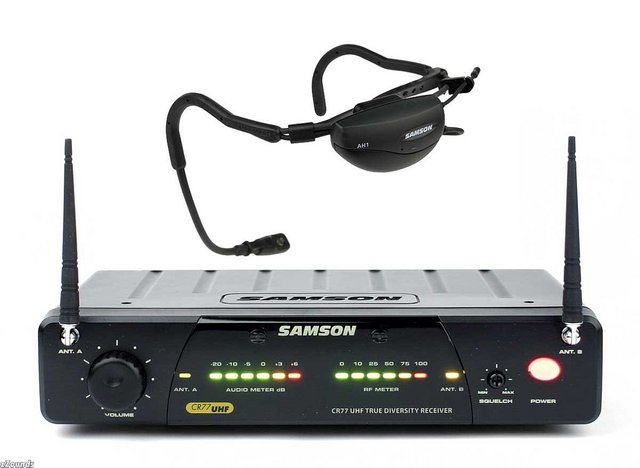
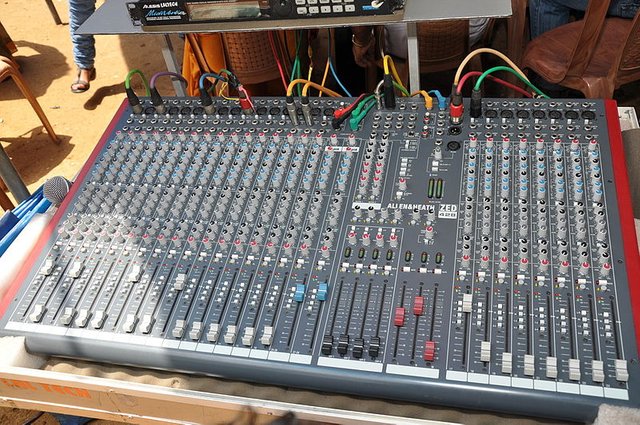
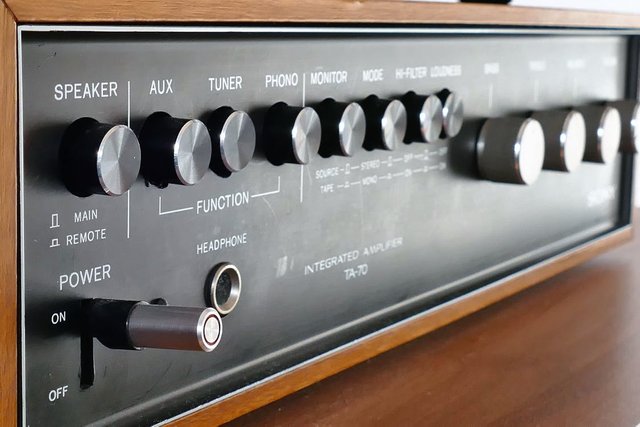
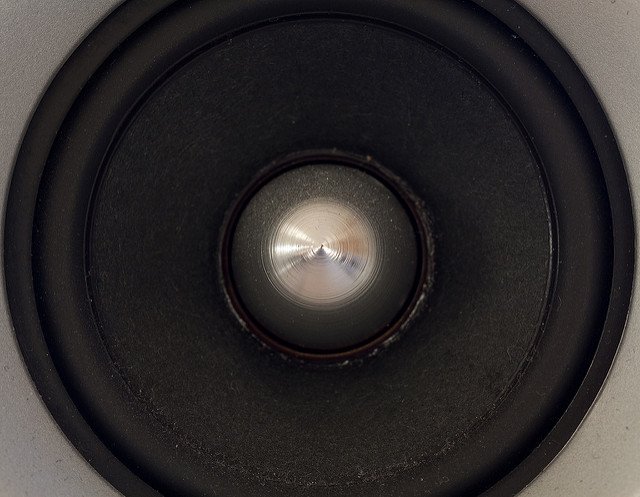


Hello! I find your post valuable for the wafrica community! Thanks for the great post! We encourage and support quality contents and projects from the West African region.
Do you have a suggestion, concern or want to appear as a guest author on WAfrica, join our discord server and discuss with a member of our curation team.
Don't forget to join us every Sunday by 20:30GMT for our Sunday WAFRO party on our discord channel. Thank you.
I always thought microphones are all the same, that the only difference is their aesthetics. On learning that they are of two types based in their, is an add to collections of newly added knowledge. Nicely written sir
Congratulations! Your post has been selected as a daily Steemit truffle! It is listed on rank 14 of all contributions awarded today. You can find the TOP DAILY TRUFFLE PICKS HERE.
I upvoted your contribution because to my mind your post is at least 19 SBD worth and should receive 170 votes. It's now up to the lovely Steemit community to make this come true.
I am
TrufflePig, an Artificial Intelligence Bot that helps minnows and content curators using Machine Learning. If you are curious how I select content, you can find an explanation here!Have a nice day and sincerely yours,

TrufflePigThis was really well detailed I must say
Thumbs up for u bro
Hi @lawkay!
Your post was upvoted by utopian.io in cooperation with steemstem - supporting knowledge, innovation and technological advancement on the Steem Blockchain.
Contribute to Open Source with utopian.io
Learn how to contribute on our website and join the new open source economy.
Want to chat? Join the Utopian Community on Discord https://discord.gg/h52nFrV